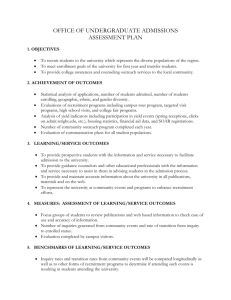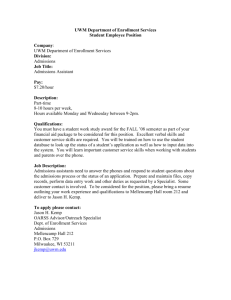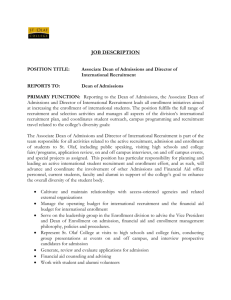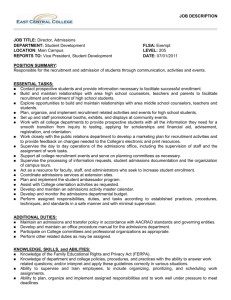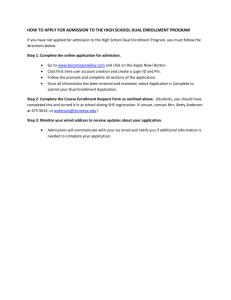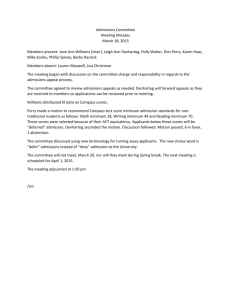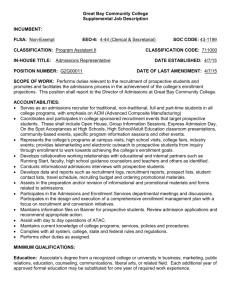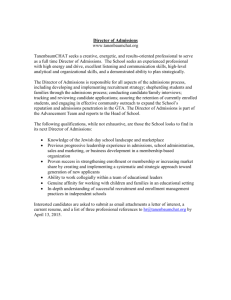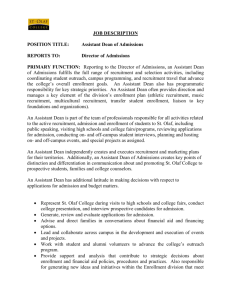Departmental Admission Policy Change Request
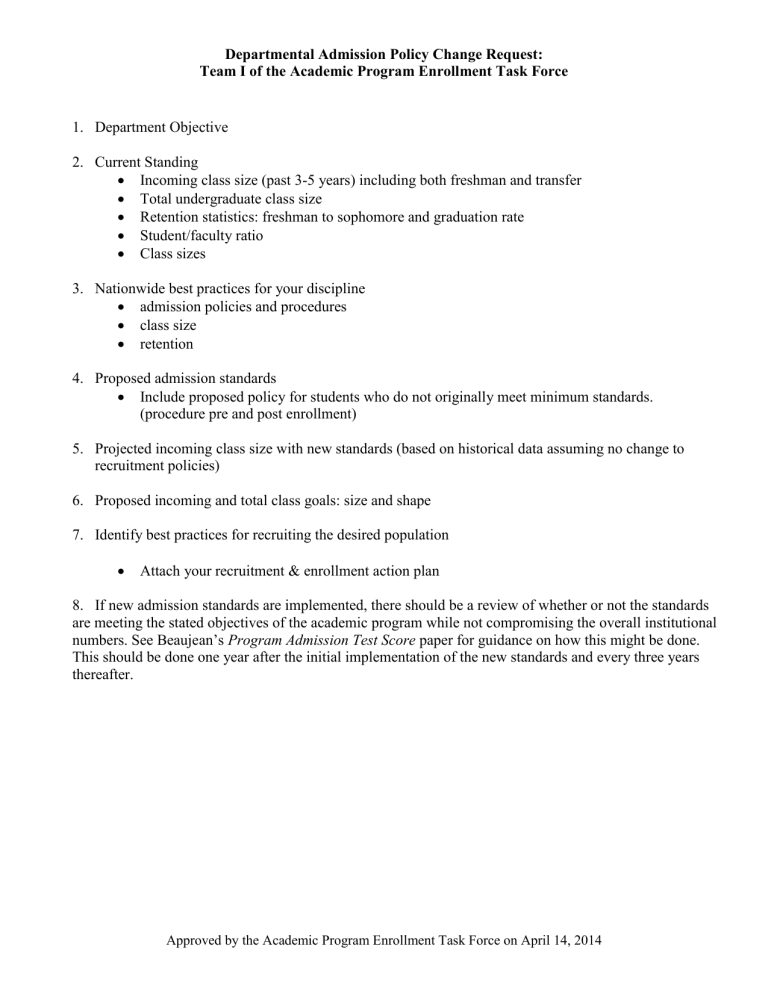
Departmental Admission Policy Change Request:
Team I of the Academic Program Enrollment Task Force
1.
Department Objective
2.
Current Standing
Incoming class size (past 3-5 years) including both freshman and transfer
Total undergraduate class size
Retention statistics: freshman to sophomore and graduation rate
Student/faculty ratio
Class sizes
3.
Nationwide best practices for your discipline
admission policies and procedures
class size
retention
4.
Proposed admission standards
Include proposed policy for students who do not originally meet minimum standards.
(procedure pre and post enrollment)
5.
Projected incoming class size with new standards (based on historical data assuming no change to recruitment policies)
6.
Proposed incoming and total class goals: size and shape
7.
Identify best practices for recruiting the desired population
Attach your recruitment & enrollment action plan
8. If new admission standards are implemented, there should be a review of whether or not the standards are meeting the stated objectives of the academic program while not compromising the overall institutional numbers. See Beaujean’s Program Admission Test Score paper for guidance on how this might be done.
This should be done one year after the initial implementation of the new standards and every three years thereafter.
Approved by the Academic Program Enrollment Task Force on April 14, 2014
Departmental Admission Policy Change Request:
Team I of the Academic Program Enrollment Task Force
Implementation Timeline
Implementation of new admissions criteria is dependent upon the nature of the request. Once the following information is determined, the department will schedule a meeting with the admissions office, the enrollment specialist in the academic unit, the associate vice president of enrollment management, and the assistant vice provost for academic enrollment management to determine appropriate next steps.
Key Considerations:
1.
Impact on total incoming enrollment and university net tuition revenue goals
If the projected loss is greater than 10 enrolled students within that academic program, with no departmental goal to replace those students, then alternate plans will need to be created. o Admissions will need to determine if there is a sufficient number of applications in other disciplines to make up the difference. If yes, then proceed to item 2. If no, then admissions will need to work with the administration to create a plan to compensate.
This may include identifying new resources to increase the prospect pool, change minimum standards for other applicants, etc.
2.
Impact of admissions criteria on operational procedures
If the criteria are strictly quantitative in nature(eg., a standardized test score or a grade in a certain high school class), the admissions office will first need to determine whether we are currently gathering the appropriate data. If yes, implementation time could be limited to the marketing and recruitment timeline. If no, the implementation time will be directed by the application form creation, data collection processes, and programming the review process.
If the department is requesting review of non-quantitative elements, the implementation timeline will depend on several factors: o Who will complete the review? Admissions Office or department? And who will review appeals? o Average number of applications received: If this number is large, additional staff may be needed. In order to keep the recruitment process moving, students need to be reviewed and a decision made between November 1-December 5.
Determine admissions and enrollment goals.
3.
Impact of admissions criteria on recruitment and marketing
Official communications about upcoming admissions cycle begin in January ( 18 months prior to enrollment) o Presentations o Printed materials o Electronic materials
Create admissions messages o Acceptance/denial letters o goBaylor messages o Applicant re-review timing (if necessary)
Create recruitment action plans to include o Enhanced recruitment messages for admissions counselors to deliver o Enhanced recruitment participation from the academic department
Approved by the Academic Program Enrollment Task Force on April 14, 2014

